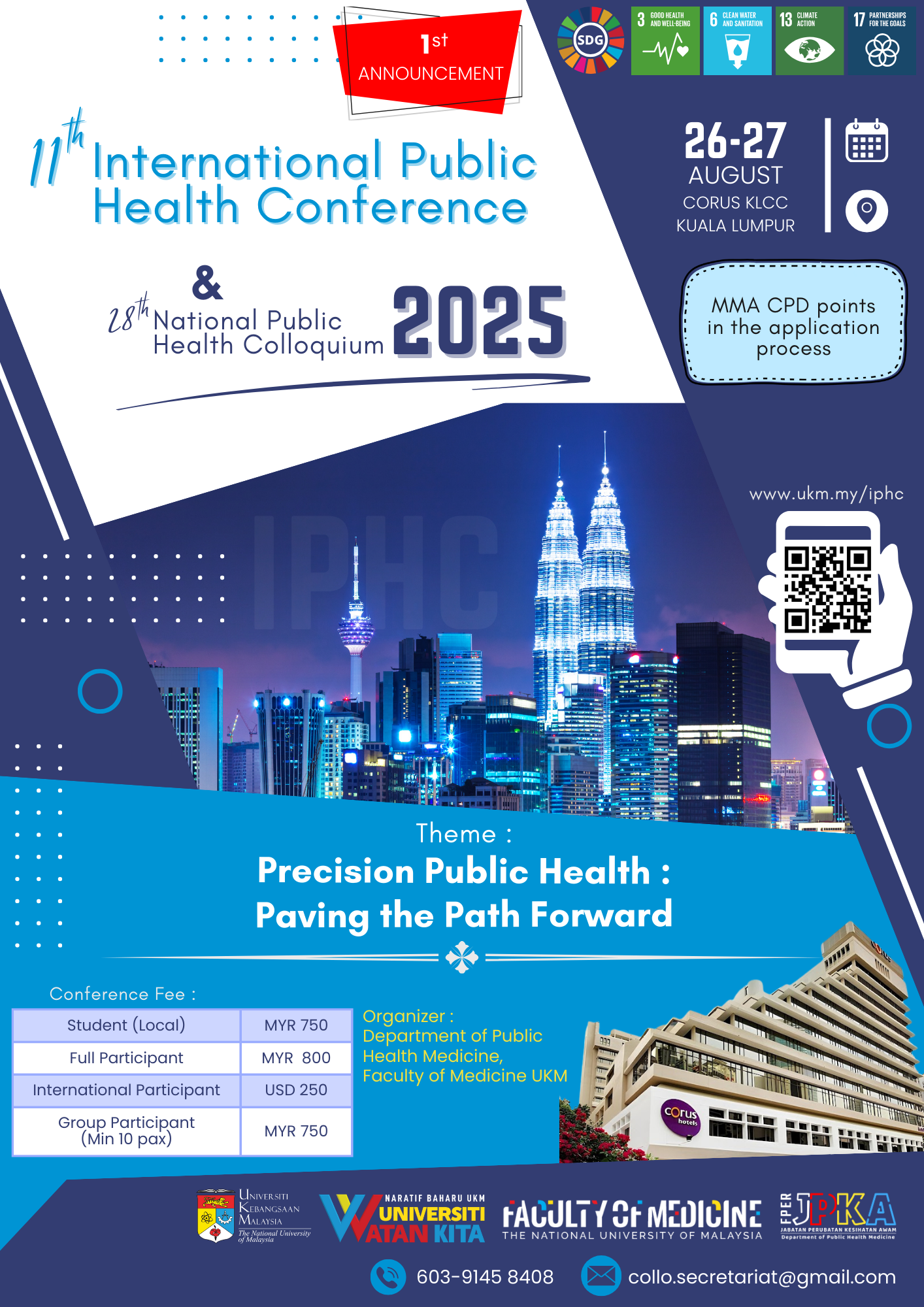Contributory Factors to the Smoking of Shisha among Teenagers in the Perak City of Ipoh: A Preliminary Qualitative Survey
Keywords:
Shisha smoking-teenager - factors influencing Shisha - health risk.Abstract
Introduction
The purpose of this study is to explore the reasons of Shisha smoking among teenagers in Ipoh, Perak.
Methods
Data was collected using in-depth face to face interview. Purposive convenient sampling was used to select volunteer respondents from one of the Shisha restaurant located at Ipoh. The interviews were conducted for 15-20 minutes, recorded using video tape. The data obtained was transcribed and coded for the purpose of thematic analysis.
Results
All respondents were influenced by peers in their first attempt in Shisha smoking. Other reasons attracting them to continue smoking Shisha include appealing smell and the flavoured taste of Shisha, easy to access, perceived that Shisha was not addictive and its’ cheaper price. In terms of perception on health risk, all respondents believed that Shisha was less harmful compared to cigarette smoking
Conclusions
More educational programme, health talk about risk of Shisha should be developed and conducted to rectify the misconception about health risk of Shisha smoking. The target population should be focus on male teenagers who smoke Shisha in order to control the widespread Shisha smoking in Malaysia.
References
Zahran FM, Ardawi MSM, Al-Fayez SF. Carboxyhaemoglobin concentration in smokers of sheesha and cigarettes in Saudi Arabia. BMJ. 1985; 291: 1768-1770.
Radwan GN, Mohamed MK, El-Setouhy M, Isreal E. Review on water pipe smoking. J Egypt Soc Parasitol. 2003; 33: 1051-1071.
Varsano S, Ganz I, Eldor N, Garenkin M. Water-pipe tobacco smoking among school children in Israel: Frequencies, habits, and attitudes. Harefuah. 2003; 142: 736-741.
Maziak W, Fouad FM, Asfar T, Hammal F, Bachir EM, Rastam S, Eissenberg T, Ward KD. Prevalence and characteristics of narghile smoking among university students in Syria. Int J Tuberc Lung. 2004; 8(7): 882-889.
Shihadeh A. Investigation of mainstream smoke aerosol of the argileh water pipe. Food Chem Toxicol. 2003; 41(1): 143-152.
Jaleel MA, Noreen R, Hameed A, Hussain A, Rauf S, Ali L, Tanoli T. An epidemological study of smoking at Abbottabad. J Ayub Med Coll Abbottabad. 2001; 13(1): 34-36.
Marziak W, Ward KD, Afifi Soweid RA. Tobacco smoking using a waterpipe: A re-ermerging strain in a global epidemic. Tobacco Control. 2004; 13: 327-333.
Taha AZ, Sabra AA, Al-Mustafa ZZ, Al-Awami HR, Al-Khalaf MA, Al-Momen MM. Water pipe (Shisha) smoking among male students of medical colleges in the eastern region of Saudi Arabia. Ann Saudi Med. 2010; 30(3): 222-226.
Jackson D, Aveyard P. Waterpipe smoking in students: Prevalence, risk factors, symptoms of addiction, and smoke intake. BMC Public Health. 2008; 8(17): 1-5.
Akl EA, Gunukula SK, Aleem S, Obeid R, Jaoude PA, Honeine R, Irani J. The prevalence of waterpipe tobacco smoking among the general and specific populations: A systematic review. BMC Public Health. 2011; 11(244):1-12.
World Health Organization. Tobacco regulation advisory note: Water pipe tobacco smoking: Health effects, research needs and recommended actions by regulators. 2005.
Mohd Ariff M. Shisha-smoking: alarming trend among urban youths. Bernama. 2006 June 14. Available from: http://www.bernama.com/bernama/v3/news.
World Health Organization. Guidelines for the conduct of tobacco-smoking surveys among health professional. 1984.
Mohammed HR, Zhang Y, Newman M, Shell DF. Waterpipe smoking in Kuwait. Eastern Mediterranean Health Journal. 2010; 16(11): 1115-1120.
Roskin J, Aveyard P. Canadian and English students' beliefs about waterpipe smoking: A qualitative study. BMC Public Health. 2009; 9(10): 1-7.
Lim YH. Facebook in Asia, total users and age group [Latest Stat]. Grey Review the Social Web Journal. 2010; Available from: http://www.greyreview.com/2010/03/02/facebook-in-asia-total-users-and-age-groups-latest-stats/.
Knishkowy B, Amitai Y. Water-Pipe (Narghile) smoking: An emerging health risk behavior. Pediatrics. 2005; 116(1): 113-118.
Smith-Simone S, Maziak W, Ward KD, Eissenberg T. Waterpipe tobacco smoking: knowledge, attitudes, beliefs, and behavior in two U.S. samples. Nicotine and Tobacco Research. 2008; 10 (2): 393–398.
Marziak W, Ward KD, Eussebbergm T. Factors related to frequency of narghile (waterpipe) use: The first insights on tobacco dependence in narghile users. Drug and Alcohol Dependence. 2004; 76: 110-106.
Ross H, Al-Sadat NAM. Demand analysis of tobacco consumption in Malaysia. Nicotine and Tobacco Research. 2007; 9(11):163-169.
Shafagoj YA, Mohammed FI, Haddi K. Hubble-bubble (water pipe) smoking: Levels of nicotine and continine in plasma, saliva and urine. International Journal of Clinical Pharmacology and Therapeutics. 2002; 40(6): 249-255.
Ward KD, Eissenberg T, Rastam S, Asfar T, Mzayek F, Fouad MF, Hammal F, Mock J, Maziak W. The tobacco epidemic in Syria. Tobacco Control. 2006; 15 (1): 24-29.
American Lung Association. An emerging deadly trend: Waterpipe tobacco use. 2007.
Kentucky Tobacco Prevention and Cessation Program. Hookah or water pipe smoking. 2006.
City of Ottawa. Water-pipe smoking. 2010.
Nakkash R, Khalil J. Health warning labelling practices on narghile (Shisha, hookah) waterpipe tobacco products and related accessories. Tob Control. 2010; 19: 235-239.
Griffiths MA, Harmon TR, Gilly MC. Hubble Bubble Trouble: The need for education about and regulation of Hookah smoking. Journal of Public Policy & Marketing 2011; Vol. 30, No. 1, pp. 119-132.
Downloads
Published
How to Cite
Issue
Section
License
IJPHR applies the Creative Commons Attribution (CC BY) license to articles and other works we publish. If you submit your paper for publication by IJPHR, you agree to have the CC BY license applied to your work. Under this Open Access license, you as the author agree that anyone can reuse your article in whole or part for any purpose, for free, even for commercial purposes. Anyone may copy, distribute, or reuse the content as long as the author and original source are properly cited. This facilitates freedom in re-use and also ensures that IJPHR content can be mined without barriers for the needs of research.






